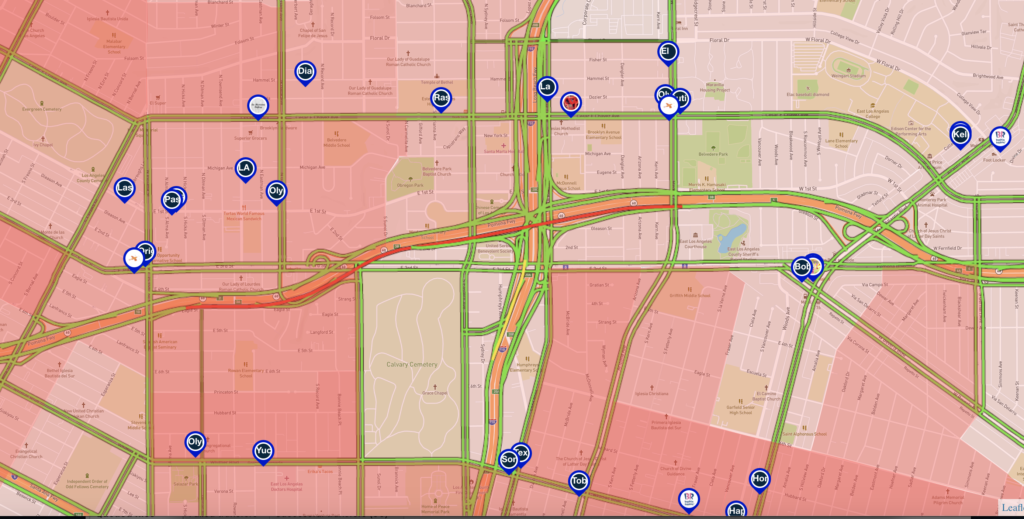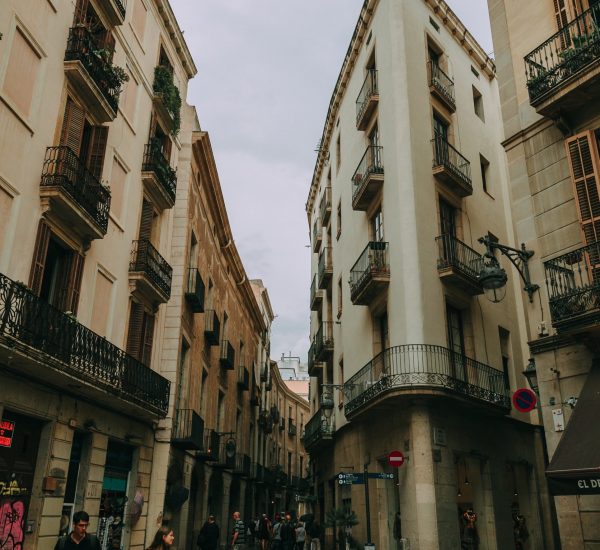The selection of retail store location and site involve a constant investigation through a geospatial view of various costs, advantages, and even trade-offs. Businesses of today aspire to be certain that their next location will be cost-effective, appealing to top talent, and will contribute to long-term growth in revenue and business. Without possessing the right means, this type of investigation typically requires a comprehensive set of knowledge in both data science and GIS (Geographic Information System) and oftentimes involves a time-intensive data collection process.
In this article, we will first talk over different types of retail locations and different forms of commercial retail locations, then we will focus on retail store location analysis necessities. Read on to gain more information on retail store location and site selection, retail store location analysis.
Commercial retail sites can be found in many different configurations. Stop and think about the existing businesses that are flourishing in your town or area. Similar to most communities, there are probably older shopping centers, new busy retail sites, and some tucked away shops in other regions of the community. Retailers need to consider several location factors when selecting a location for their business. In the following, we explain some of the more common varieties of retail sites:
Mall Space Sites
The mall area includes many retailers operating alongside each other and under one roof, from kiosks to large anchor stores. There are generally about up to 5 anchor stores or big-sized chain stores in a mall and a number of smaller retail stores with various business models. The rent is much higher in mall areas comparing to other retail sites, due to the high number of customer traffic that the malls receives on its own.
Prior to selecting this sort of site for your retail business, make sure the demographics of mall shoppers match your target market and your customer spectrum. Most of the time, mall retailers will have to make some sacrifices in the sense of independence and conform to a set of rules specified by mall management.
Shopping Center Sites
Much similar to malls strip malls and other adjacent retail sites will stipulate guidelines or rules as to how they prefer for their tenants to conduct business. Perhaps these rules and guidelines are more easygoing in a strip mall than they are in huge shopping malls, but prior to signing a contract, make sure you can comply with these possible guidelines. There are probably a great number of shopping malls of different sizes in your area or your town.
A great number of shopping centers may have 3 or up to 20 units available. The types of retailers will also vary, as will the goods or services offered by them. Prior to choosing this sort of retail store location, parking space is one area to look into and conduct an investigation about. Smaller shopping malls and strip malls may have limited or insufficient parking spaces for your clients.
Downtown Area Sites
Similar to the mall, this type of store location can be another great option. However, in these retail sites, the business owner may benefit from more freedom and fewer rules and regulations. Many communities are actively working to breathe new life into their downtown areas so retailers and retail businesses can benefit greatly from that effort. Yet for retailers in the downtown site, the problem of parking shortages is generally a big problem. In any downtown area, you will find many older, well-established specialty stores and retail shops.
Free Standing Locations
Basically, every stand-alone building is considered as this sort of retail site. This retail location can be tucked away in a spot in a district or right off a busy highway. Dependent upon the landlord, there are generally no constraints on how a retailer can conduct business in this sort of retail locations.
These locations will most probably have adequate parking space, and the cost will be reasonable per square foot. The price a retailer has to pay for all this freedom can be customer traffic in the area. As opposed to the retail locations connected to each other (like malls or shopping areas), where shoppers can walk into the shop as they are hanging out in the general shopping area, the retailer of a free-standing location has to focus on promotions to invite customers toward the retail site.
Office Building Sites
Another option for a retail site may be the business park or office building, particularly when they provide for other businesses as well. Maintenance costs are shared by all the tenants and the image of the building is usually very upscale and professional.
Home-based Sites
More and more retail businesses get off to a start as a home-based business. In the end, some may move to a commercial location, whereas many remain in the spare room of the business owner’s house. This type of business site is an inexpensive option but may limit the growth of the business. It is more difficult to separate business and personal life in this setting, and if there is no specific address and/or phone number for the company the retailer can face many problems for the business.

Retail Store Location Analysis
It is expensive to move a business to a new location. From day one, it is important to analyze the choice of location so that moving to a new location does not become an issue down the road. Seeing as a poor site has the ability to seriously limit the success of a retail business and may actually contribute to the failure of a retail business, initial research and analysis is a crucial step that requires attention when looking to open up a retail site, whether it’s a small boutique or a new Walmart store.
A retailer with a unique location benefits from strategic advantages compared to similar retailers. A product or service that sells in one community (such as hot cakes) may not sell nearly as well in another region or might not be sold at all!
With the appearance of technology in our time, online shopping, and delivery on the next day, doing the proper analysis before opening a retail site (for example as a retailer of construction necessities such as brick and mortar) has become even more significant. When deciding on a retail site, we must determine the following first:
1. Alternative trading zones and areas. Trade areas are classified as a contiguous geographic area that accounts for most of the sales and customers of the retail stores. If you are a local micro-business, you will only receive a narrow customer range in the same area, but if you are looking for a retail site in a bigger retail outlet zone, you will benefit from plenty of options in terms of customer range and business success.
- Do you prefer a site in rural, suburban or metropolitan area?
- How much purchasing power per capita is needed for your product or services? If people are unable to afford your product, or there are not enough people in a given area to buy your product or pay for your services, it will be hard to be successful.
2. Determine which type of location or site you prefer. You will need to evaluate the following when looking at types of possible location or site:
- Population — does the region or region receive enough people?
- Is the area density sufficient to meet your needs?
- What are the population characteristics?
- What is the level of income of the population and what are the social and cultural mixes in this region?
3. Population literacy
- What is the level of population literacy and education?
- What languages do the community people speak, and what is the structure of religions in the area?
4. Trading elements
- Do any other stores conduct similar businesses like yours in the area?
- What do these stores stock and what is their reputation?
- Is there a sufficiently large trade area for you to prosper along with the others?
5. Accessibility
- Can the people reach you with vehicles, public transport or by walking?
- Is there parking available, and how far from other retail areas are you located?
- Can physically disabled individuals access your site easily?
6. Amenities
- Can you plan and open the business at the same time as people want to shop?
- Are you planning to make deliveries, receive online orders, and accept credit cards?
There are a great number of elements to consider and as we move forward in the analysis we will have to investigate many of them. Retail store location and site selection, or even retail store location analysis are not as easy as hanging out a shingle. The importance of conducting an analysis when you selecting a retail site will greatly affect the success or failure of your business!


